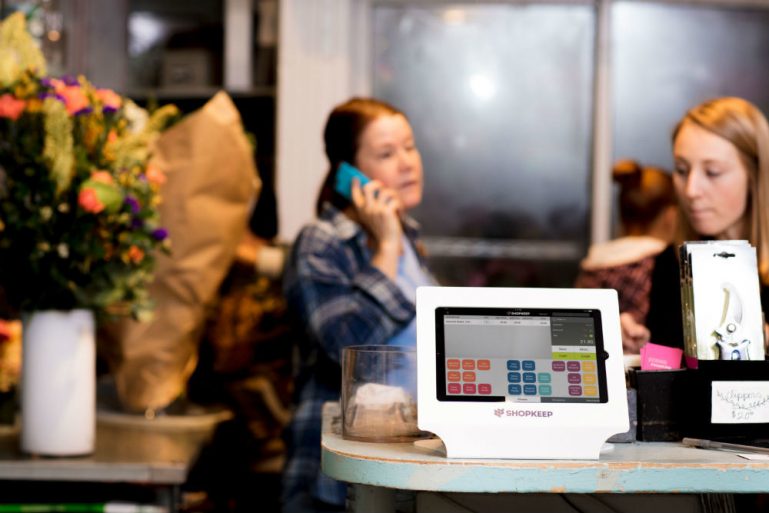
Lean Business Practices for Cash-Strapped Retailers
Lean business practices are essential to being a lean retailer and making your business more profitable.
If you read our first blog post in this series, How to Run a Profitable Business, (Minus the Costly Mistakes), you should have a solid understanding of what lean business is, the foundational elements, and benefits the strategy can have you your business. For those of you that didn’t catch it or those that did and need a quick refresher, let’s take a quick 20 seconds in the next section to recap what it means to be a lean business.
What is a Lean Business
A lean business is a long term, ongoing strategy that strives to eliminate waste in order to improve efficiency, agility, and quality of a business – all while maximizing value to customers. It’s a minimalistic approach to running a business that aims to do more with less. While it may seem like a contradiction, doing more with fewer resources, it’s much easier than you think; once you break it down into smaller steps.
What is Lean Business Ideology
To implement lean business practices into your everyday, let’s first understand the ideology or philosophy behind what it means to be a lean business.
The concept of a lean business is something that can be traced back to the days of Henry Ford with his introduction of the first assembly line to mass produce automobiles. Lean has deep roots in the manufacturing industry and more modernly, the technology industry. However, it is not limited to just those two, nor is it limited to business in general. The idea of eliminating waste and improving efficiency are theories that can be applied to many different scenarios and nearly every facet of life.
Thinking Lean
With all this talk about waste, you’re probably wondering, how do you know what is a waste and what brings value? The best way to get into the mindset of lean business management and the ideology of operating a lean business is through the methodology of Build-Measure-Learn. The notion behind Build-Measure-Learn is, you have an idea, you build it, you measure the results or response, you learn what can be improved upon, what is a waste and what is valuable, and then repeat the loop.
In retail, it might seem that new ideas occur less frequently than say, the technology industry. After all, people have been selling retail for thousands of years – how much can there be left to innovate or build? The answer is, of course – a great deal. Merchants are constantly confronted, with the challenge of ideation – of navigating the unknown. What’s the best way to increase sales? Is this the best layout for a retail store? How can I attract more customers of a particular demographic? Should I expand and offer accessories to compliment my core offering? Would my furniture store or ice cream shop be successful in this neighborhood? The best way to answer these questions is by thinking lean and using the Build-Measure-Learn technique.
Build. Rome wasn’t built in one day, and neither was Google’s Gmail, Apple’s iPhone, or mega-retailer, Amazon. In fact, the latter started out as an online book store in 1995, and they can now deliver groceries and provide your business with a platform to sell your products. So, what’s the point? The point is, these companies didn’t start out doing all the cool and fancy things they are known for today. They began with a basic idea, or in other words, building a Minimum Viable Product (MVP) to begin their journey through the Build-Measure-Learn process.
SEE ALSO: Are You a Lean Business? Or Just Cheap?
Measure. Once you have a minimum viable product and you’ve given the experimental stage enough time in the water to gather data from the market, you then need to measure your findings against the hypothesis or idea you had in the experimental build stage.
Learn. Once you have some solid data measurements, you can then determine which direction to move based on the results of that data. Have you been right all along and now you have the data to back it up? Or did the measurements provide you with some insight into areas that you can improve? Typically, findings suggest the latter but once in awhile a business or industry will get it right the first time.
If this sounds a lot like trial and error, you are not wrong. However, trial and error seem like a more haphazard approach – like you’re just throwing ideas at the wall to see what sticks. With the Build-Measure-Learn model, you are using actual data analysis to guide you towards your next move and provide insight into which direction you should go.

Examples of Lean Organizations
A lot of well-known companies can contribute their success ideology of lean and implementing lean business principles at the core of their strategy, straight through to the surface and their everyday workflow. Here are five examples of companies that have implemented lean principles. Take notice that these examples cover a diverse range of industries, which proves that the concept of lean business can work in any industry because it is based on solid business fundamentals.
Ford. You can’t talk about a lean organization without mentioning the founding father of the assembly line technique for mass production, Henry Ford. Ford eliminated waste and improved production flow by creating a process that enabled car parts to reach stationary employees in specified intervals rather than workers having to move around to find the parts.
Toyota. Piggy-backing on the assembly line concept of Ford, as Japan was digging itself out of the aftermath of World War II, business leaders at Toyota developed TPS or Toyota Production System. In addition to just the machinery on the assembly line to improve production efficiency, they broadened their focus to include the flow of the product through to the customer. Their vehicle production system leverages a method called Just-in-Time (JIT) and can be described as a system or process that produces goods to market in the quickest, most efficient way.
SEE ALSO: How to Run a Profitable Business, Minus the Costly Mistakes
Zara. Zara is a large retailer that follows the JIT system as part of their process. They keep a low volume of stock on hand and continuously update their collection. For them to be agile and move quickly, they own a combination of automated factories and finishing shops. When a particular design has been approved, it moves from the factory to the finishing shop where the details are applied and ready to ship in as little as 24 to 48 hours, depending on the destination.
Nike. In the 1990’s, Nike was facing harsh criticism for its poor labor practices in their overseas contract factories. So much so, that it lead to boycotts and diminishing sales that forced Nike to face the music and make changes. Over the years since the scandal surfaced, Nike has made strides in improving its factory conditions and has heavily relied on lean manufacturing principles to eliminate waste, improve satisfaction amongst employees and help drive profits back up.
John Deere. This is a great one because it’s not something that was brought on because of a scandal or something that was always just part of the plan, but rather out of the need to modernize their current manufacturing operation and infrastructure. They had come to a point where a significant part of their workforce and skilled machinists were on the verge of retirement, and a lot of their machines and tools were getting older and needed to be replaced. They were at a crossroads. But rather than jumping to a hasty decision, they looked at the entire production process to determine what, if any, changes needed to be made.

Lean Business Practices Retailers Should Adopt
We know there has been a lot of talks thus far about being a lean business, what it means to practice lean manufacturing, what it’s like to be lean in the tech industry, but what does it mean to be a lean retailer when you are running a growing business? What are the lean business practices you should adopt to drive sales and profits?
As a small retailer, you don’t have a whole lot of control over the manufacturing aspect of the items you sell (unless of course, you are selling handmade items), but you do have a lot of control over what happens once it reaches your store.
Automate Whenever Possible
If you can automate the inventory intake process leveraging a barcode scanner and your POS system, do it! Not only will you eliminate human error, but the person who’s performing the task will get the job done much quicker via this method, rather than a manual process. For retailers, automation can include anything from inventory to marketing and even employee payroll, and we can thank technology for that.
Waste Not, Want Not
Along the same lines as business automation, lies waste elimination. The ability to eliminate waste in the form of wasted time and unnecessary errors is highlighted in the barcode example above. By implementing an automated tool, you by default, eliminate waste in two areas: human error and time spent performing the task. Take a minute to examine some areas of waste in your business and identify what steps can be made to minimize it or eliminate it altogether.
Flex Your Lean Business
Once the waste is removed, your business will become much agiler and flexible. Less waste means less baggage for your business to carry. Implementing a couple of simple tools such as a POS system and a barcode scanner, to serve as your inventory management system and the focal point of the checkout process will significantly improve your workflow and flexibility to add new inventory. If your POS system can also double as your employee management system, your integrated ecommerce store, accounting software, and much more depending on the specific features and capabilities, then you have just doubled down on your lean business practices.

What is Lean Process Improvement
Whether you’re a business that started lean or a business that is thinking about making the transition, it’s important to understand that lean is a continuous process of improvement. It’s a constant cycle of Build-Measure-Learn. Knowing the entire flow of your business, what drives your customers to purchase from you and understanding where improvements can be made would be a broad definition of lean process improvement.
To narrow it down, we can break it into different business processes. For example, checking out customers, accounting, analysis, employee scheduling, and payroll are all processes. You can improve these processes on their own or in conjunction with another process to help eliminate waste. For instance, can you leverage your POS system to export employee hours and email this data to your accountant or payroll service. Striving to continuously make small improvements on business processes adds up to big savings, which is what the lean process is all about.
How to Adopt a Lean Business Model in your Business
The best advice we can give you about adopting lean business principles for your own business is to have an open mind and find one that works best for you. Like snowflakes, no two businesses are alike. So, what might work well for one, will not work well for another – even if they are in the same industry.
Stay on top of trends, do your research, experiment and test the market before you commit to a particular process or new product. Measure the results of your test or experiment to determine if your hypothesis is correct or if you need to make a few adjustments.
Just like the barcode example, which is a simple tool whose core job is to scan UPC barcodes at the point of sale, has an alternative use as part of your inventory management process. So, even though there are upfront cost and a learning curve for the barcode scanner and the POS system, it serves multiple purposes. Thus, making your business more efficient and profitable. What are some lean business practices that you can adopt to help cut costs, raise profits and improve customer satisfaction?
Want to try ShopKeep for yourself?
Just answer a few easy questions.
Need help finding the right point of sale?
Just complete the form. We’ll call you right back to explain how ShopKeep can work for you.
Hit the ground running.Sprinting, in fact!
Read our free, comprehensive guide, Small Business 101, to learn all you need to know about starting a thriving business.

